Dyneema Safety Advice: Loopies vs. Whoopies vs. Loopies 2.0
tl;dr: Loopies are extremely dangerous. Don't use them as highline/slackline anchors. Whoopies are definitely safer and easy to use, Loopies 2.0 are definitely safer but have high potential to use them wrong.
Dyneema becomes more and more popular among keen slackliners. Many reasons speak for it: It's strong, it's lightweight, it packs small, it's easy to splice. But it has downsides too: Knots reduce its strength a lot and you have to splice it. And this is what this article is about: Dyneema splices for advanced slacklining use. There are several techniques to splice Dyneema ropes to build anchors for longlines or highlines. This article highlights the most common techniques that can be found in the wild nowadays and show their advantages and their flaws.
Some weeks ago i saw a picture of a highline anchor in my facebook feed. Nice, clean, lightweight. But there was one big flaw: There was a loopie sling used in a highline anchor. I studied the picture for some minutes and realized: wow, this is really dangerous (I will point out the reason a little later). I commented on it, there was a little discussion, I forgot about it some days after. During the last days I came across another picture like this: Clean, lightweight, Loopie. And once again: Hell, this is f***ing dangerous. That's why I decided to write about the danger of Loopies and how to avoid it. So here we go:
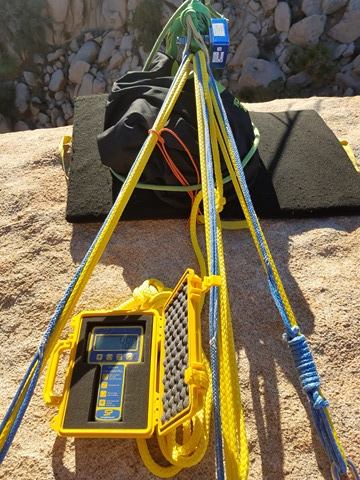
Hard to recognize but this is really dangerous: A Loopie Sling in a highline anchor. Pic: David Kingston
Why are Loopies dangerous? Basics of hollow braid splicing
A splice in a hollow braid rope always works the same way: The rope is threaded through the hollow core of the rope itself. When the outer braids come under tension, they reduce their volume, the outer braids press onto the threaded rope, the friction keeps the inner rope from slipping. It's that simple. But it's also that simple to misunderstand this: If the outer rope braids are not under tension anymore, the inner rope is completely free to slip again. I'll come back to this later.
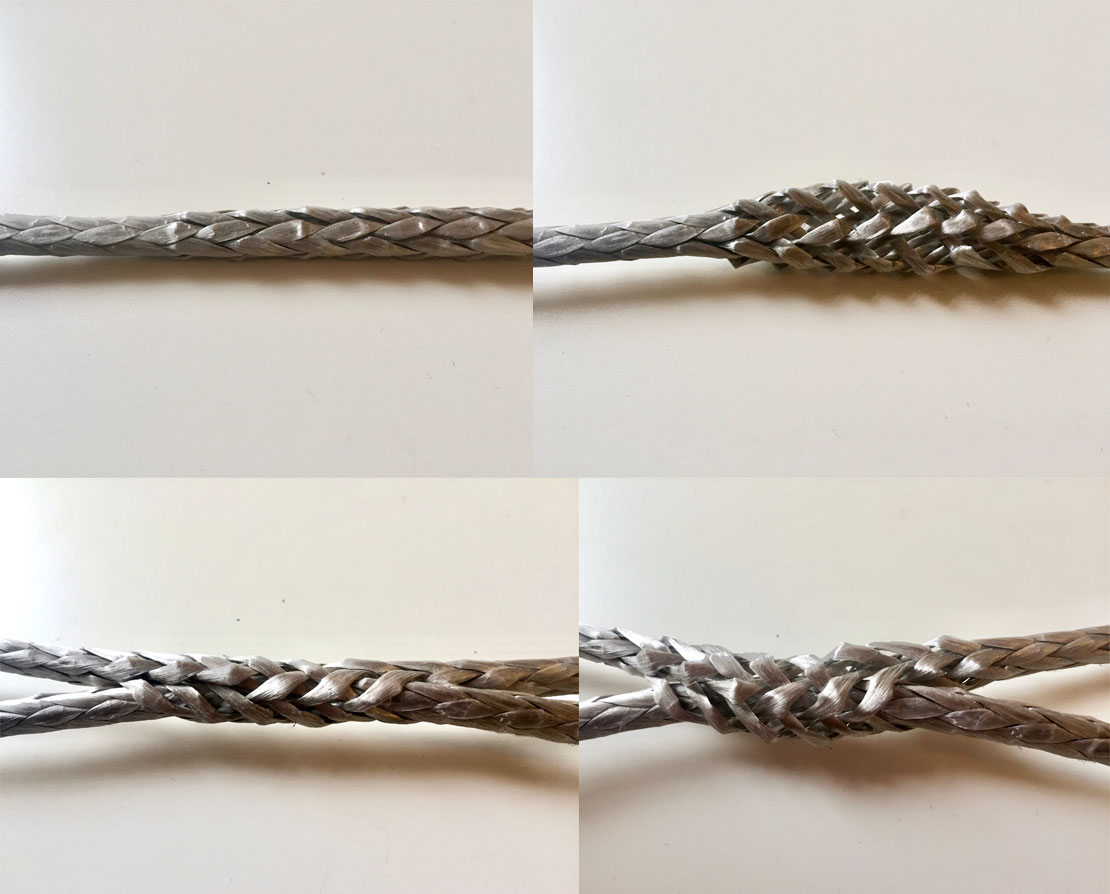
left side: rope sections under high tension reduce their volume and produce friction to the inner rope. Right side: No tension means hollow braid without any friction for the inner rope
Whoopie Slings
Whoopies are awesome. They are quite easy to splice and give you a completely adjustible rope with a loop on both ends. The adjustable splice has a huge advantage to any other spliced loop: As long as the eyes of the whoopie are loaded, the splice itself is loaded, so the inner rope is always under pressure from the outer braids and can never slip. There's nearly no way to use a whoopie the wrong way. 2 Loops, adjust the length, ready to go as soon as there's tension. Whoopies are safe.
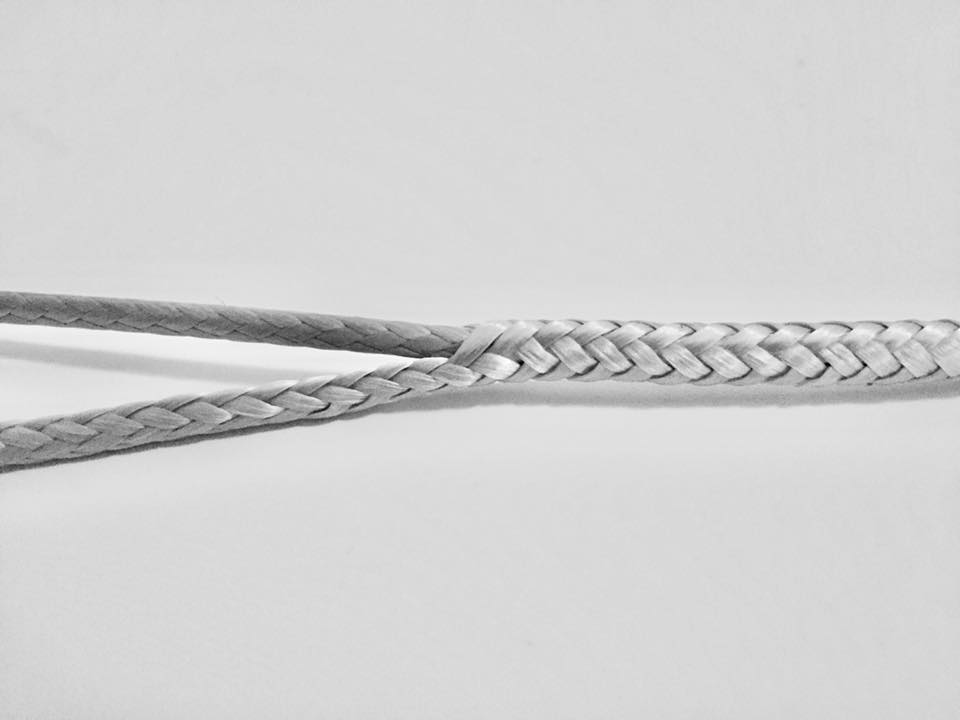
Splice section of a whoopie sling
Loopie Slings
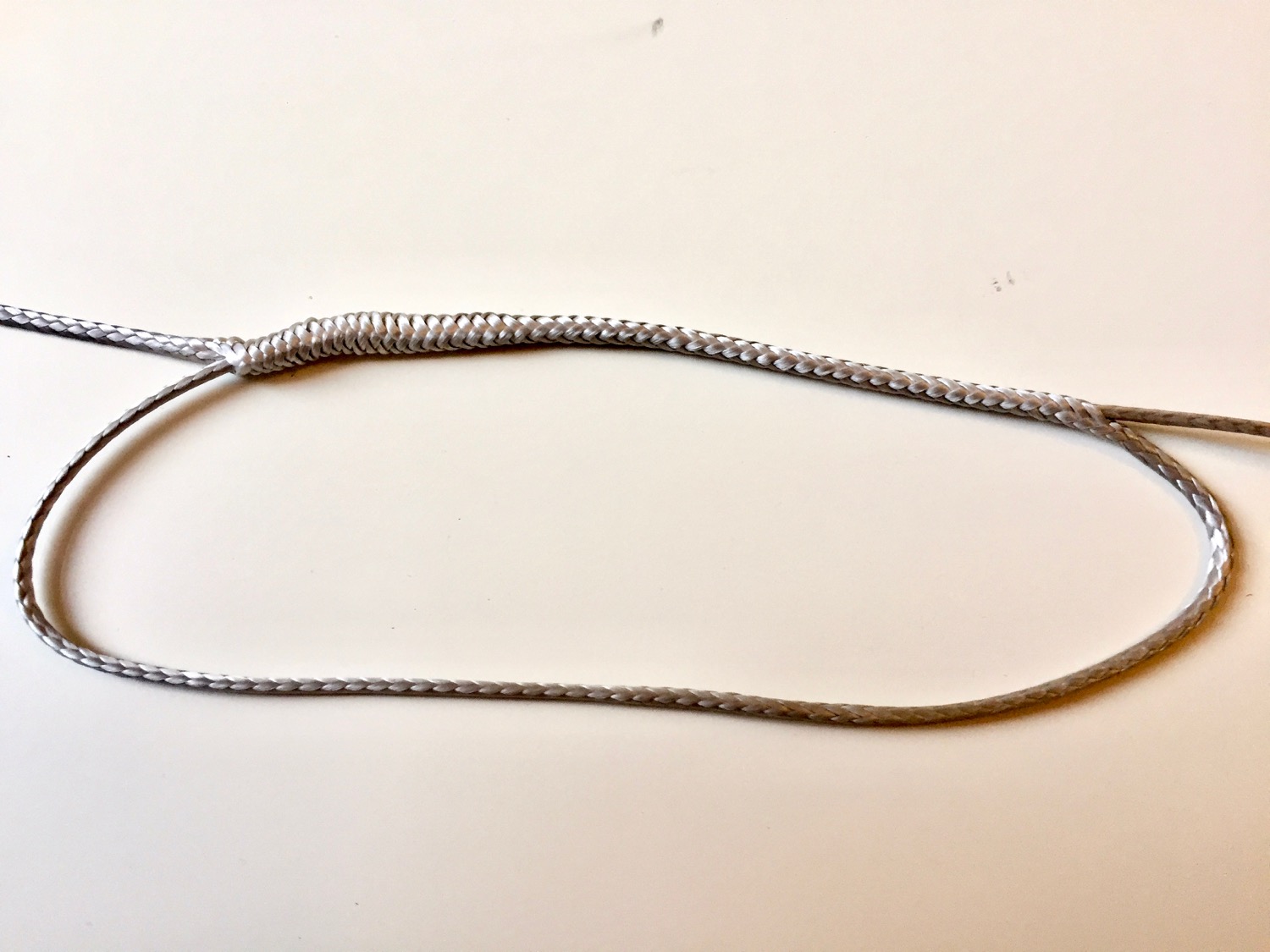
Loopie splice section.
The left part of the splice can easily be undone even under load because the loose tail doesn't carry any load at all Loopie slings are even easier to make than whoopies. You splice the rope to a loop and bury both loose ends. That's it. And there's another thing that seems to be a huge advantage on first sight: Loopies always carry the load on 2 strands, so they should be twice as strong as whoopies in theory. But they aren't. Loopie slings are extremely dangerous as an anchor slings for slacklines. Here's why: The splice section of a loopie has one loaded end (right side in the picture) and one end, that's a loose tail (left side in the picture), which is completely unloaded. This unloaded tail moves freely when the sling shakes. These shakes can easily be caused by wind or leashfalls for example. As soon as the loose tail moves, the splice opens and the inner rope is not under pressure anymore. The inner rope slips out and the whole anchor fails.
There are several strategies that try to avoid the loose end to move freely: 1.: Whipplings. This seems to be an easy method to keep the tail in place. I tried it, it still moves and it slips. 2. Bend the splice section through a shackle or a basket hitch: This works well in arborists' configurations. They have low loads and none to little movement in their setups. Slacklines are the exact opposite: High tensions and lots of movement, caused by wind, surfing, bouncing, leashfalls, some children touching the anchor sling and move the splice section, you name it. The result: The shaking makes the bent splice section move forth and back in the shackle or the basket hitch. This can move the splice section into one direction, what opens the splice completely. The result: the anchor fails in a split second. I tried it. I used it in a 60m Longline in the park. Suddenly I stood on the ground and didn't even realize how quick it became undone. So you can learn from my mistakes: This is dangerous! It will become undone under several circumstances. Loopies should never be used in a highline rig!
Loopie Sling 2.0 a.k.a. "Pirate Loopie"
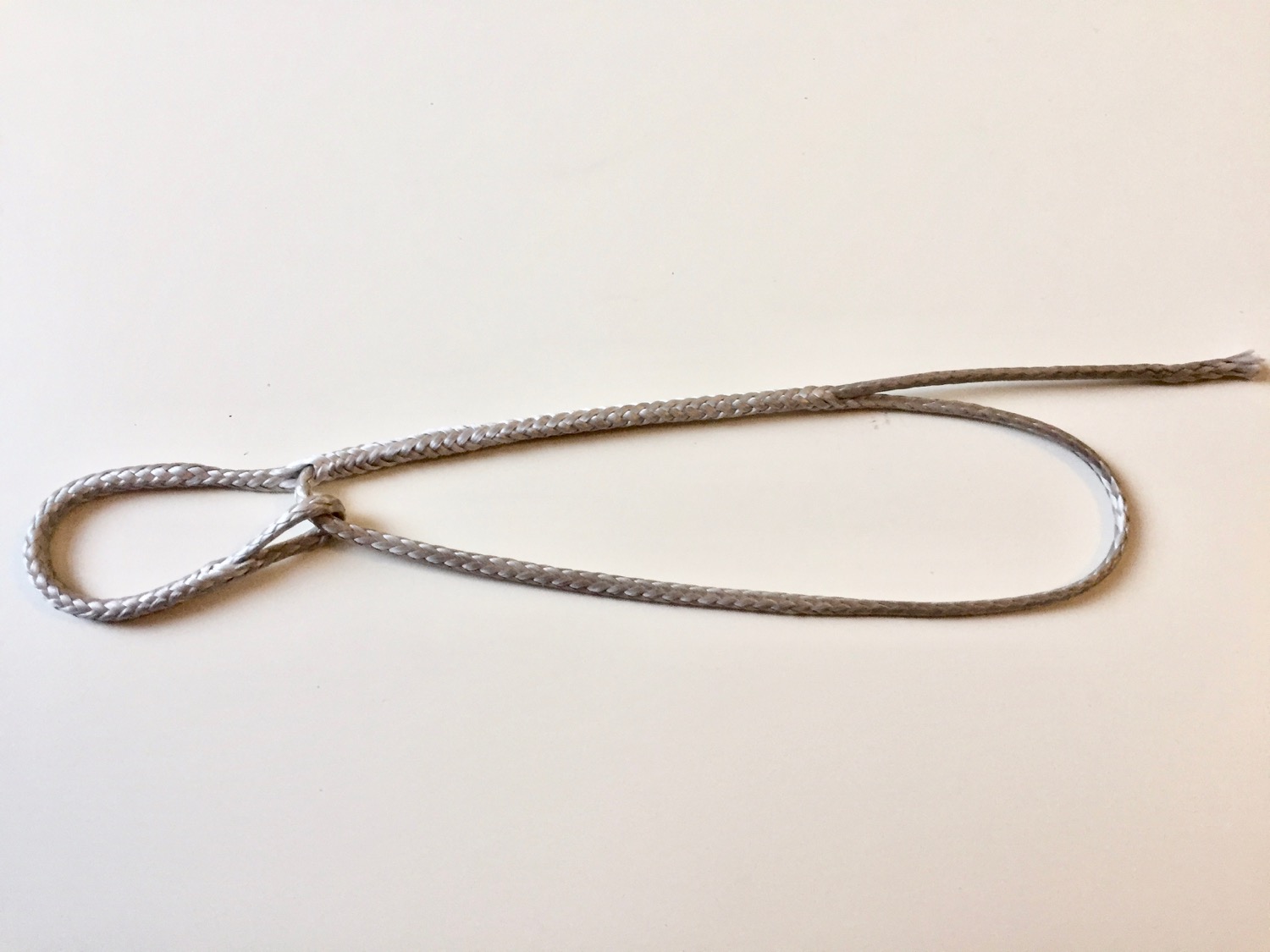
Concept of the improved Loopie Sling, called Loopie 2.0 a.k.a. "Pirate Loopie"
There is an advanced loopie sling method. It's more complicated to splice it and more complicated to use it. Keen users might like this but it's neither foolproof nor safe for novices. So please be aware: If loopie 2.0 is used wrong, it's just a simple loopie sling with all its risks of failure! The trick of Loopie 2.0 is an additional loop splice in the loose tail, where the loopie part is threaded through once. If both eyes are loaded, both parts of the splice section are loaded and the splice can not become undone. PROs: Reduces rhe risks of a Loopie Sling. CONs: It still has a potential of failure when used the wrong way. Maybe a thimble is needed to reduce friction and abrasion in the spliced eye.
ToDo
* comparison of breaking strength Whoopie vs. Loopie 2.0
Splicing Knowledge: Straight Bury vs. Brummel Lock splice
Some customers asked us what kind of eye splice we use for our Whoopie slings. There are 2 possibilities to splice an eye: The straight bury and the Brummel Lock Splice. We use the Brummel Lock for a very simple reason: The straight bury is very unsafe in conditions where load appears in cycles. There are cases known from climbing slings where simple straight buries became undone just by handling the sling. The Brummel Lock Splice prevents this effectively. Even if it becomes opened it will be fixed in its former correct position when being under load again.
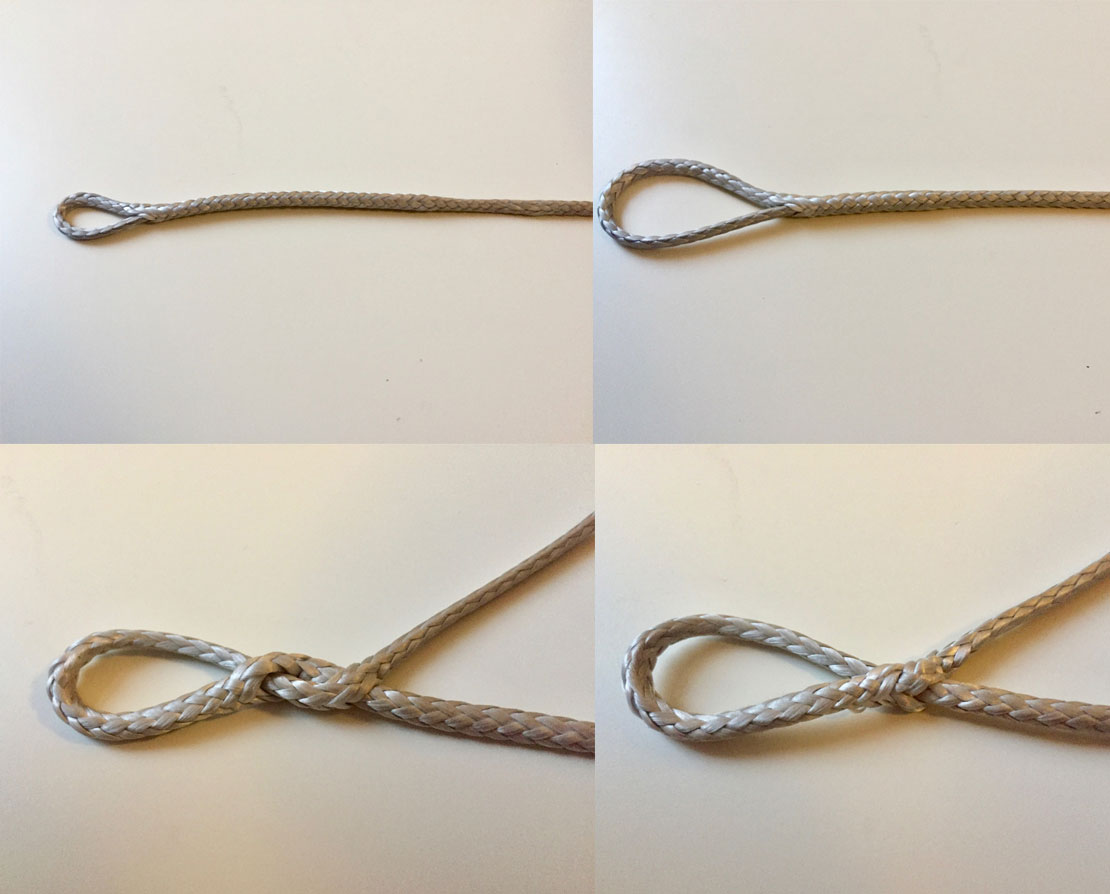
upper row: straight bury being unloaded and loaded again will increase eyesize aka the splice will fail - Lower row: brummel lock splice unloaded and loaded again: Everything is in correct position
Credits
Philipp Gesing: For very inspirational input about splicing techniques of the Loopie 2.0 and other good talks, David Kingston for a very nice chat about Loopies vs. Whoopies, http://Hammockforums.net/ for being another inspirational source on splicing techniques, Gleistein Ropes for their awesome Dyneema ropes, Selma ( http://www.selma.no/ ) for their convenient splicing fids.

 DEU
DEU
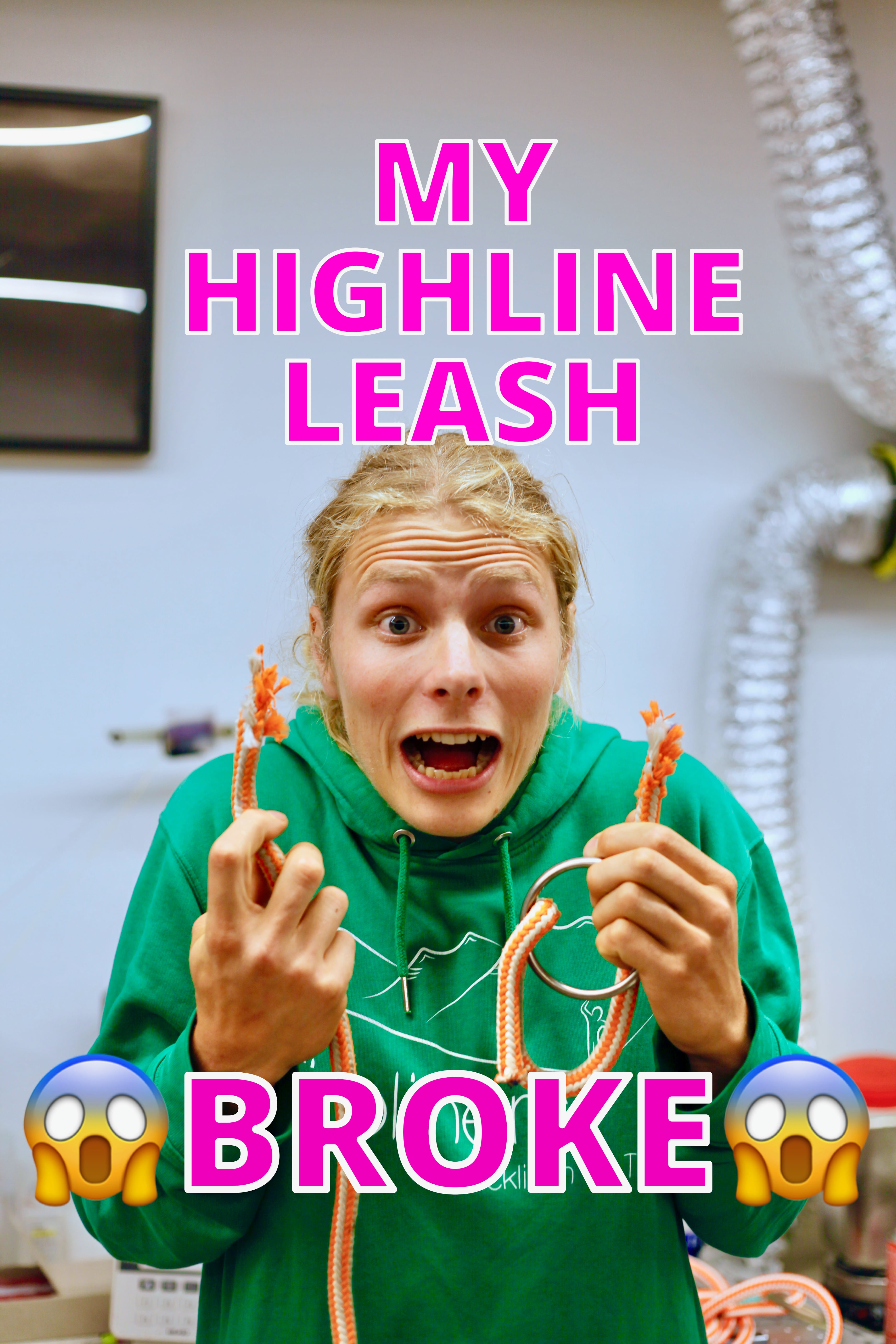

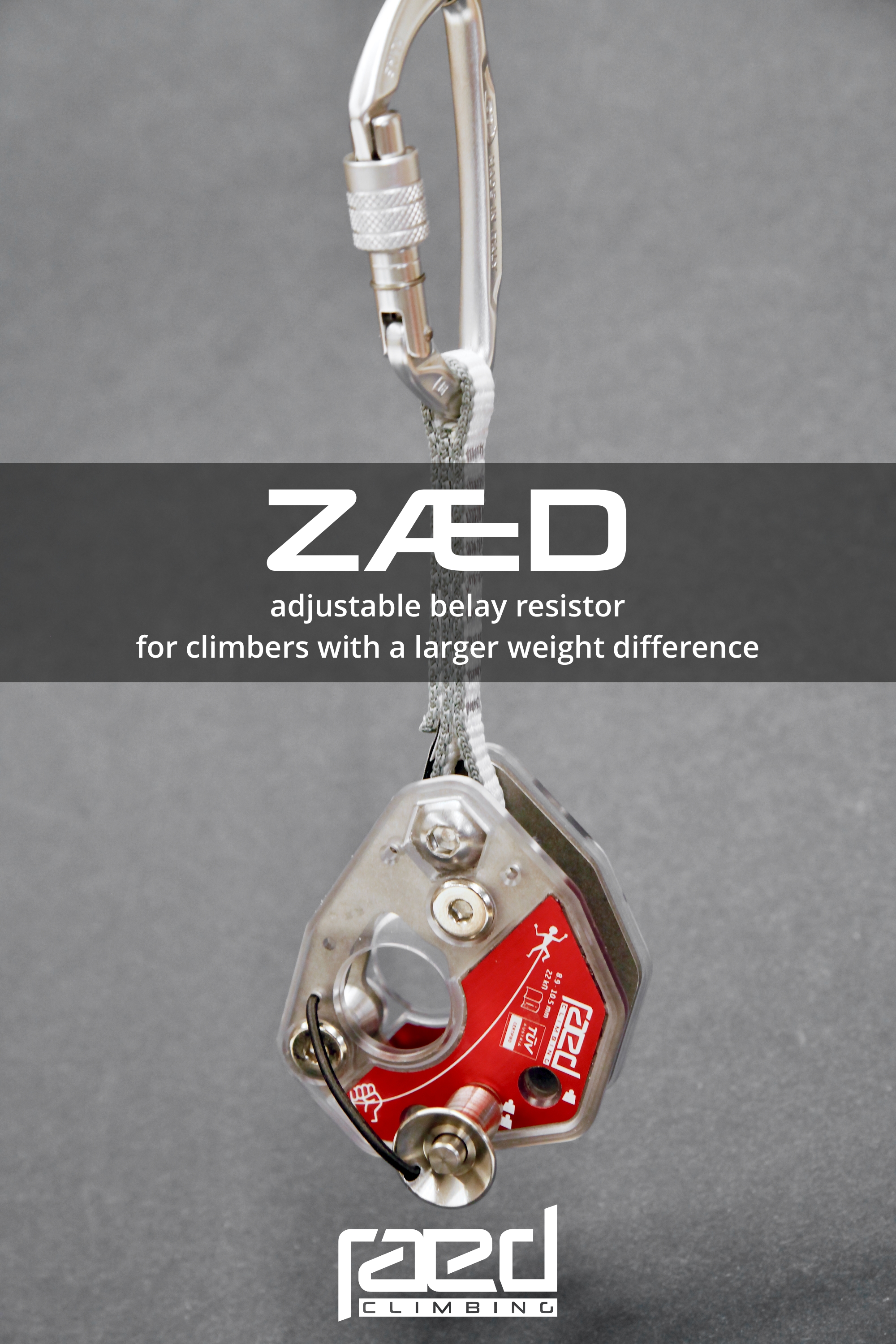


Validate your login
Sign In
Create New Account